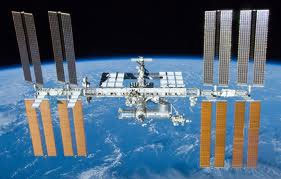The International Space Station (ISS) orbits the earth at an average altitude of 240 miles. It’s traveling at a speed of about 17,000 mph and is roughly the size of a football field. There is an international, six-person crew on board performing scientific experiments and earth observations.
The ISS is the third brightest object in the sky after the sun, moon and Venus and is easy to spot if you know where to look. Visit NASA’s Spot the Station website to sign up for alerts for when it will be passing over your neighborhood.
The ISS was launched in October 2000 and assembly was completed in 2010. It is arguably the quintessential ‘big science’ project that has remained controversial due to its dubious scientific benefit and sky high costs.
Collins Library holds a number of books, e-Government documents and magazine/journal/newspaper literature on the ISS as well as other big science projects, manned spaceflight, and other related topics.
Try a subject search in the Collins Catalog on ‘International Space Station’ to get started. Also search EBSCO’s Academic Search Premier database for journal, magazine and newspaper articles.
What do you think? Is the ISS a colossal waste of money or critical to our future in space? Like so many issues, some personal reading, research and consideration of the complexities of the topic are required. Beware of bias and incomplete information available on the internet. Library resources can provide a more balanced perspective.

